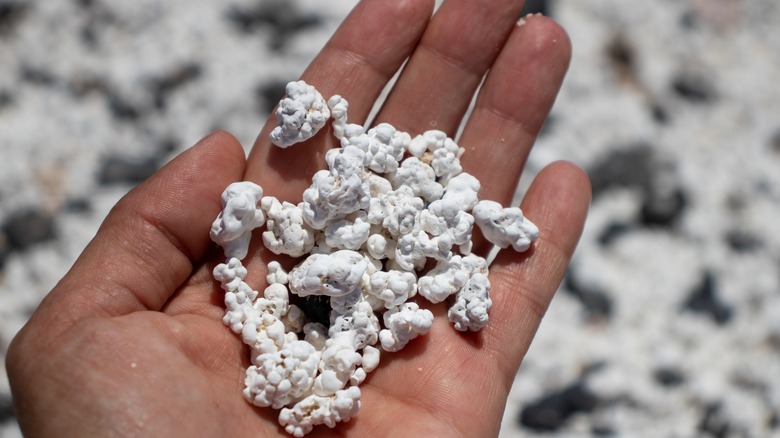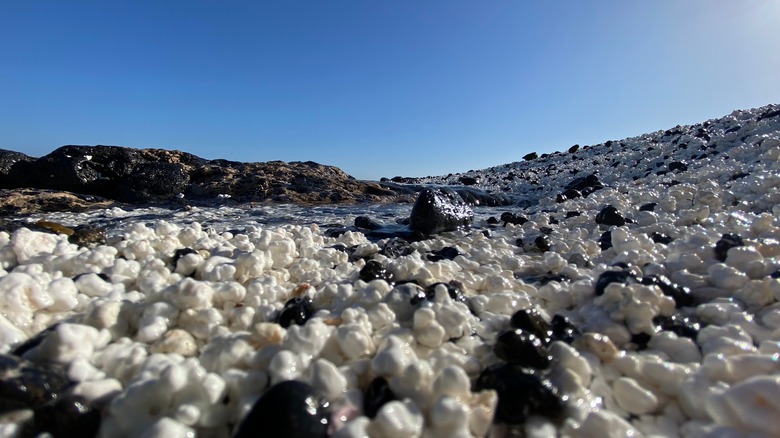This Unique Canary Island Beach Will Make You Hungry For Some Popcorn
The Canary Islands (per Britannica) is an autonomous community of Spain. The islands form an archipelago located in the Atlantic Ocean about 67 miles northwest of Africa. With a population estimated at just over 2 million, the Canary Islands are home to some of the world's most beautiful natural spots for beach-goers and island lovers, with tons of hidden gems and places to explore.
Do a little research on the islands and you might come across something dubbed "Popcorn Beach." According to Canary Islands, Latitude of Life, its real name is El Hierro beach, which is in the municipality of La Oliva on the island of Fuerteventura. The quickest way to get to the beach is an hour's hike from the town of Corralejo, according to Travel + Leisure.
The beach gets its popcorn look from something called rhodoliths, which are formations of calcareous algae and white sand that create the puffy kernel-like substance on the beach, according to the Canary Islands website. Rhodoliths grow at about one millimeter a year under water, so it is expected that the coral on Popcorn Beach must've taken centuries to have its distinct appearance.
The benefits of Popcorn Beach
El Hierro beach isn't just neat for Instagram pictures and Snapchat stories; the beach also provides a huge environmental benefit to the planet. A biologist from the Ecoaqua Institute of the University of Las Palmas de Gran Canaria, Francisco Otero, told El País that the coral found on Popcorn Beach is vital for the ecosystem because it helps absorb carbon dioxide, and forms cavities in its formation that aids certain marine species when laying their eggs, keeping them away from predators (via El País).
Absorbing carbon dioxide helps fight against climate change, given that the chemical compound is a greenhouse gas. As carbon dioxide gets produced by the use of fossil fuels, the gas gets stuck in Earth's atmosphere and retains more heat on planet Earth. Plants, like the algae on Popcorn Beach, for example, absorb carbon dioxide as part of their energy source, which helps minimize the effects of increasing greenhouse gas emissions (via the EPA).
Doing your part
Sadly, El Hierro beach has had a problem with tourists taking some of the popcorn-like coral as souvenirs, which not only ruins the beach for future tourists but has a negative impact on the environment as well. According to Canary Islands, it is estimated that around 22 pounds of coral are stolen from the beach every month by tourists, and now some action is being taken to protect the beach.
Back in 2019, the then-mayor of La Oliva complained that even though in the past some residents took the coral to their homes as decoration, the influx of hundreds of thousands of tourists has created a serious problem and is out of hand, according to The Sun. Now, tour guides inform tourists of the penalties and environmental impact that taking coral from the beaches can do, and visitors are strongly cautioned to treat the beach with respect, according to the Canary Islands website. If everyone does their part, then the exotic spot can be a special visit for generations to come, and help save the planet simultaneously.


